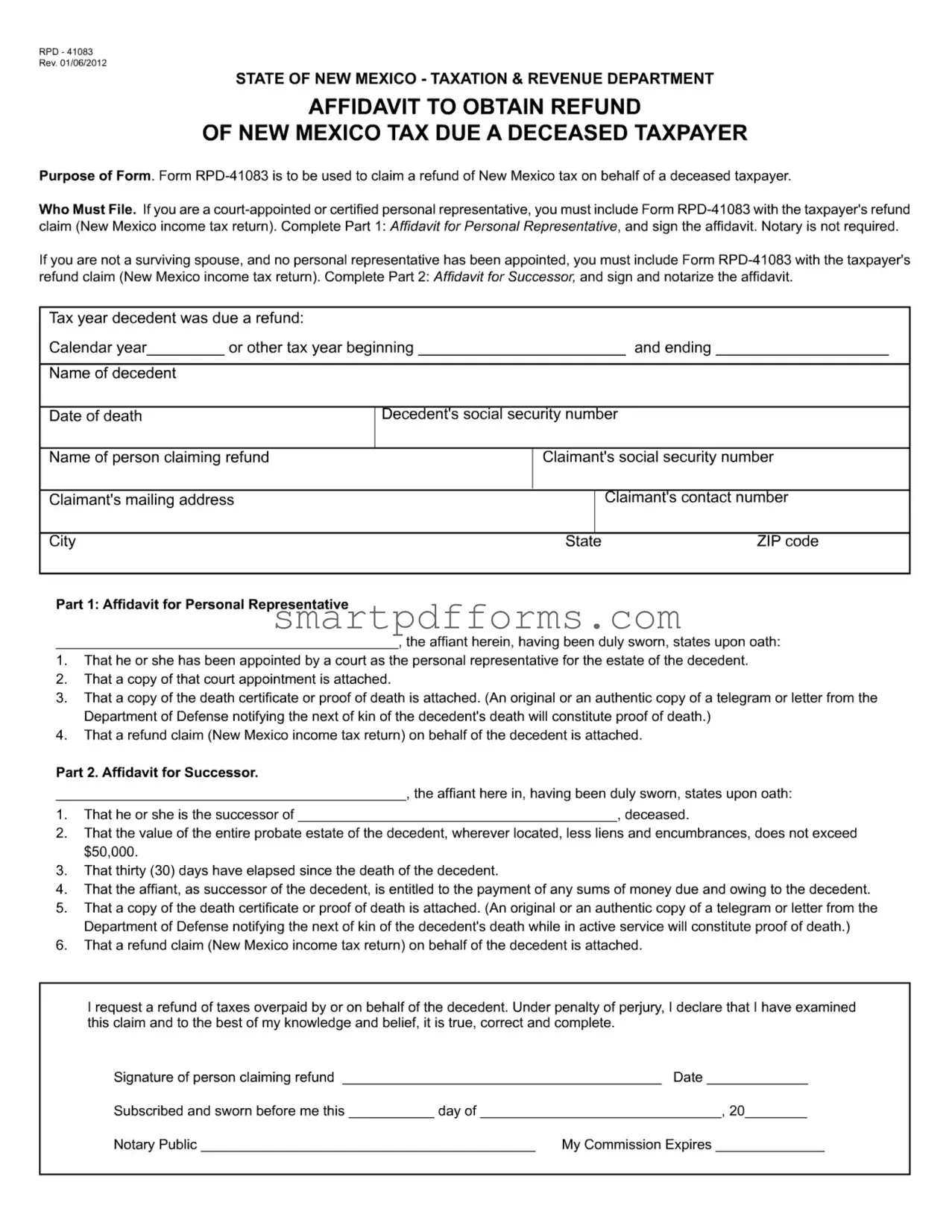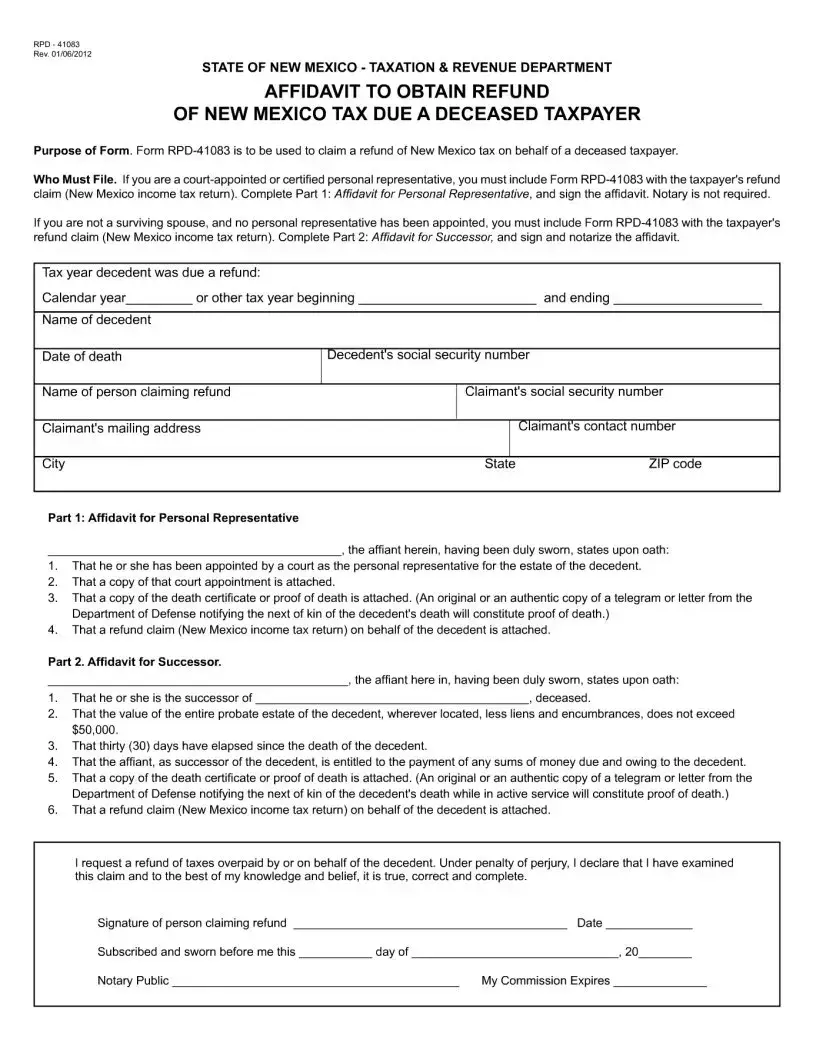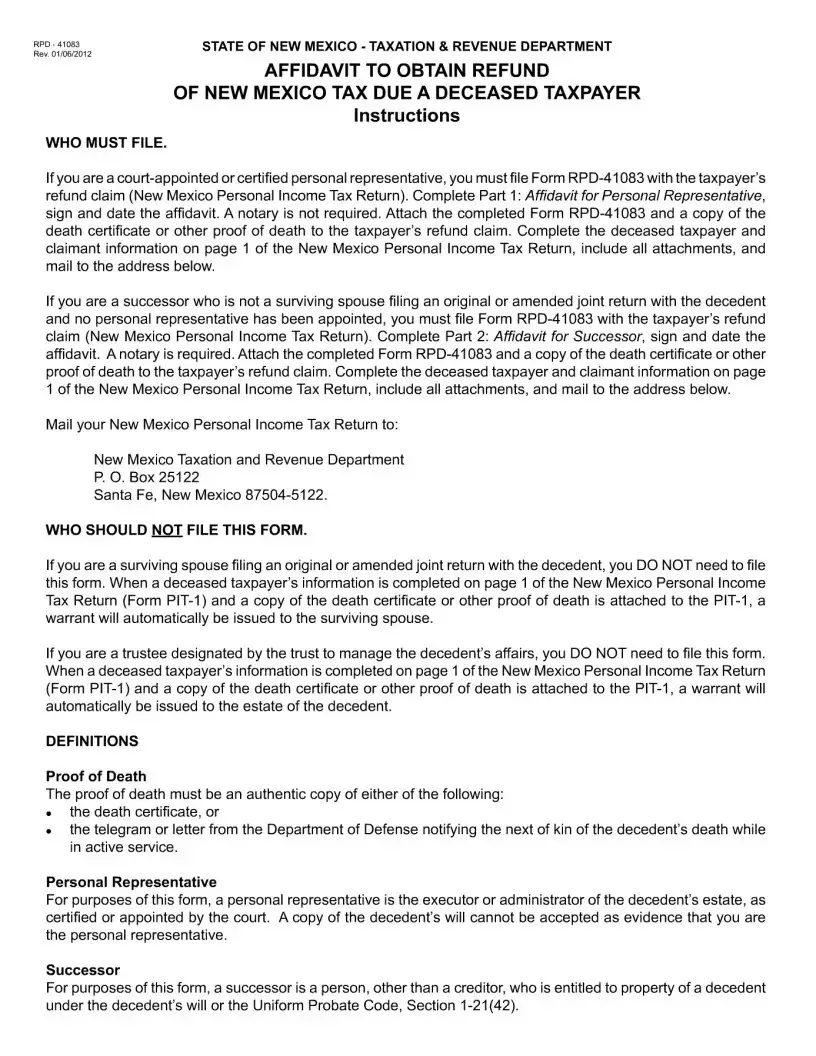Form RPD-41083 is designed to help claim a refund of New Mexico tax for a deceased taxpayer, ensuring those entitled can properly request what is due.
It is essential for court-appointed or certified personal representatives of the deceased's estate to fill out and include Form RPD-41083 when submitting the New Mexico income tax return on behalf of the decedent.
For those who do not have a court-appointed personal representative and are not a surviving spouse, the process still requires completion of Form RPD-41083, specifically Part 2: Affidavit for Successor, which also must be notarized.
To file for a refund, various documents are necessary: the completed form (depending on the filer’s status), a copy of the death certificate or other acceptable proof of death, and the decedent's New Mexico income tax return.
The state has clear definitions of who should and should not file this form. For example, surviving spouses filing a joint return or trustees managing the decedent's affairs under a trust might not need to file Form RPD-41083.
Proof of death can be provided through an authentic death certificate or a telegram or letter from the Department of Defense, especially relevant for those who passed away while in active service.
The personal representative aspect is crucial, with the form specifying it refers to executors or administrators certified or appointed by the court, highlighting the formality required in proving one’s authority to claim on behalf of the decedent.
Successor, as defined for the form’s purpose, covers individuals entitled to the decedent's property under a will or the Uniform Probate Code, essentially broadening who may be eligible to file for a refund, provided they meet the criteria.


